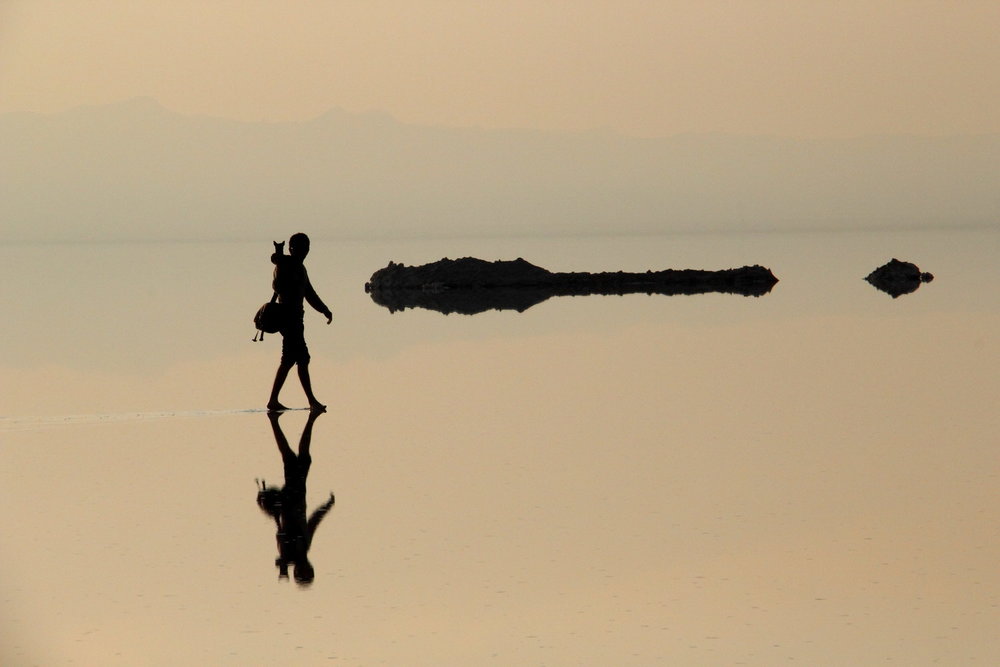Hoz-e Sultan, a gigantic natural mirror in central Iranian plateau

TEHRAN - Hoz-e Sultan, a lonely salt lake in the heart of Iran, resembles a gigantic natural mirror as its shallow water covers a vast plain of salt deposits. It is the epicenter of a relatively rich fauna as well.
Sprawled about 40 kilometers northward of the city of Qom and adjacent to the Qom – Tehran highway, the lake is said to be a suitable place for breeding a kind of shrimp, called Armita.
Covering 37,075 hectares with an altitude of about 720 meters above sea level, the lake is considered as one of the lowest parts of the Iranian plateau.
Shour, Ghara-Chai and Varamin are amongst rivers that discharge into the lake. The latter come from southern parts of Tehran Province. Melting snows and some seasonal rainfalls contribute to the inputs as well.

A car’s bodywork is reflected in the Hoz-e Sulatan, a salt lake in central Iran.
The lake assumes different characteristics, sizes and shapes in various seasons of the year so that its attractiveness varies from time to time.
It is composed of two main interconnected segments. The western part is named after the lake itself and the eastern one is called Hoz-e Moreh. Both become chockfull of water in rainy season.
The region is a haven for some breeds of migratory birds, majority of them come from the north Caspian countries.
There can be found footprints of houbara, pigeon, grey goose, mallard, duck, ruddy shelduck, stork, flamingo, falconers, grey goose, stork and different kinds of eagles.
Mammals like rabbit, rat, fox and sometimes deer can be spotted near the lake.
According to researches, there are more than 240 species of valuable aerobic creatures such as algae, bacteria, and mushrooms.
Best timing for visiting this lake starts from late autumn through early spring.
(Reporting by Edalat Abedini; Editing by Afshin Majlesi)
AFM/ MG

Leave a Comment